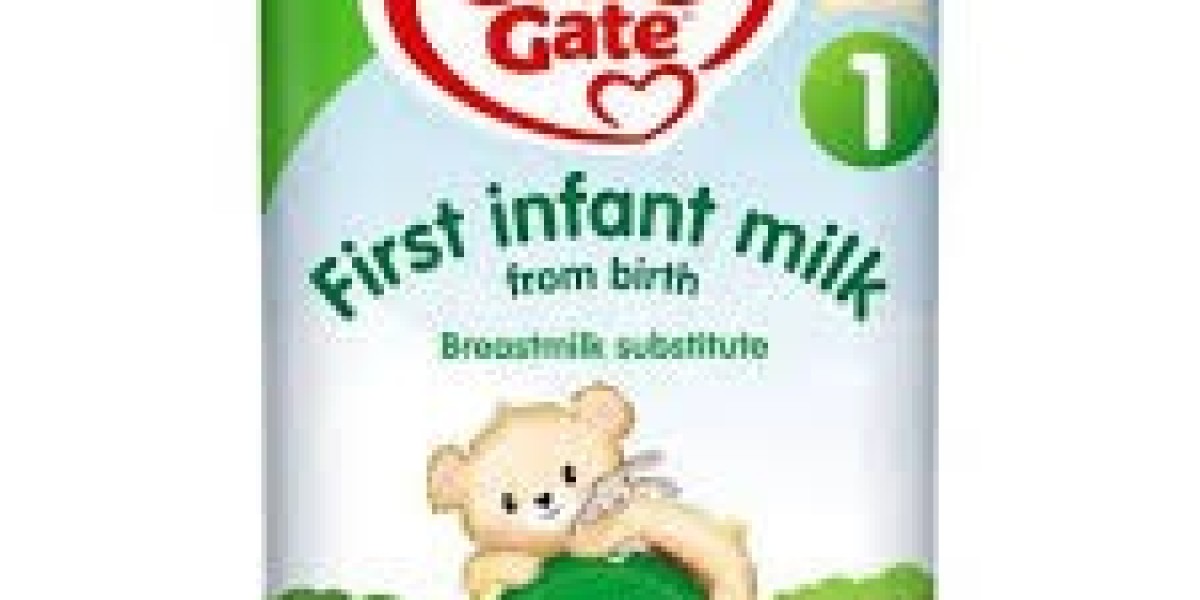Choosing the best formula milk for your baby can feel overwhelming. With many brands, types, and claims on the market, new parents often wonder, Which formula is best for my infant’s needs? Whether you cannot breastfeed, supplement, or explore alternatives, the right formula ensures your baby gets the nutrition they need to grow and thrive.
Why Formula Milk Matters
Breast milk is often the gold standard, but formula is a safe and healthy alternative. Infant formula milk is carefully designed to mimic the nutrients found in breast milk—proteins, fats, vitamins, and minerals—all essential for your baby’s development.
Beyond nutrition, formula feeding provides flexibility. Any caregiver can prepare a bottle, making it easier for moms to rest, return to work, or share feeding responsibilities.
Different Types of Infant Formula
Not all formulas are the same. Understanding the categories helps you pick what’s best for your baby:
1. Cow’s Milk-Based Formula
The most common type is made from cow’s milk modified to resemble breast milk. It’s rich in protein, carbohydrates, and fats. Most babies tolerate this well.
2. Soy-Based Formula
Made with soy protein, this option is ideal for babies with lactose intolerance or for families seeking a plant-based alternative.
3. Hydrolyzed Formula
The proteins in this formula are broken down (partially or extensively) to facilitate digestion for babies with allergies or sensitivities.
4. Specialty Formulas
These are designed for specific health needs, such as reflux, colic, or premature birth. They should only be used under a pediatrician’s guidance.
Key Nutrients to Look For
The best infant formula should provide a balanced nutrient mix that supports growth and brain development. Look for:
- DHA & ARA: Essential fatty acids for brain and eye health.
- Iron: Helps prevent anemia and supports red blood cell development.
- Probiotics & Prebiotics: Aid digestion and strengthen immunity.
- Calcium & Vitamin D: Support bone growth and development.
Checking labels carefully can help ensure your baby gets these essentials.
Top Factors to Consider Before Choosing a Formula
Every baby is different, so what works for one may not work for another. Keep these points in mind:
- Digestive comfort: Some babies may get gassy or constipated on specific formulas.
- Allergies or sensitivities: Signs like rashes, fussiness, or diarrhea may indicate a reaction.
- Doctor’s advice: Always consult your pediatrician before switching formulas.
- Budget and availability: Choose a formula you can access consistently.
Pros and Cons of Formula Feeding
Like everything in parenting, formula feeding comes with advantages and challenges.
Pros:
- Flexible feeding schedule.
- Other caregivers can help.
- Measurable intake—you know exactly how much your baby eats.
Cons:
- More expensive than breastfeeding.
- Requires preparation and sterilization.
- Lacks the natural antibodies found in breast milk.
The key is finding balance and choosing what works best for your baby and family lifestyle.
Safety Tips for Preparing Formula
Formula feeding is safe as long as it’s prepared correctly. Here are some must-follow tips:
- Always wash your hands before handling bottles.
- Sterilize bottles, nipples, and caps regularly.
- Use boiled and cooled water for mixing, especially for newborns.
- Never reuse leftover formula—discard after each feeding.
- Follow the manufacturer’s instructions precisely.
Signs the Formula Is Right for Your Baby
You’ll know your baby is thriving if:
- They are gaining weight steadily.
- They seem satisfied after feeding.
- Their digestion is comfortable (less gas or fussiness).
- Wet and dirty diapers are regular.
If your baby shows discomfort, persistent crying, or unusual stools, consult your pediatrician about trying another formula.
When to Switch Formula
Switching isn’t always necessary, but in some cases, your doctor may recommend it. Consider switching if your baby shows:
- Consistent diarrhea or constipation.
- Blood in stool.
- Severe fussiness after feeding.
- Signs of allergies like eczema or wheezing.
Gradual transitions are often best, mixing the old and new formula for a smoother adjustment.
Building Bonding Moments During Feeding
Remember, feeding time isn’t just about nutrition. Hold your baby close, make eye contact, and whisper. These little moments help build emotional security and strengthen your bond, no matter what milk you choose.
FAQs About Infant Formula Milk
1. Is formula milk as healthy as breast milk?
Breast milk contains natural antibodies that formula can’t replicate, but formula is carefully designed to provide essential nutrition and is perfectly safe for babies.
2. Can I mix breast milk and formula?
Yes, many parents choose combination feeding. It allows your baby to benefit from breast milk while ensuring they get enough nutrition when breast milk isn’t available.
3. How long can prepared formula sit out?
The prepared formula should be used within two hours at room temperature. If refrigerated, use it within 24 hours.
4. How do I know if my baby is allergic to formula?
Signs may include rash, vomiting, diarrhea, or excessive fussiness. Always consult a pediatrician if you suspect an allergy.
5. Can I switch formula brands freely?
It’s best to consult your pediatrician before switching. Some babies tolerate changes well, while others may need a gradual transition.
Finding the best formula milk for your infant doesn’t have to be stressful. Focus on your baby’s health, comfort, and your pediatrician’s advice. Remember, whether breastfed, formula-fed, or both, what matters most is that your baby is loved, nourished, and thriving.







